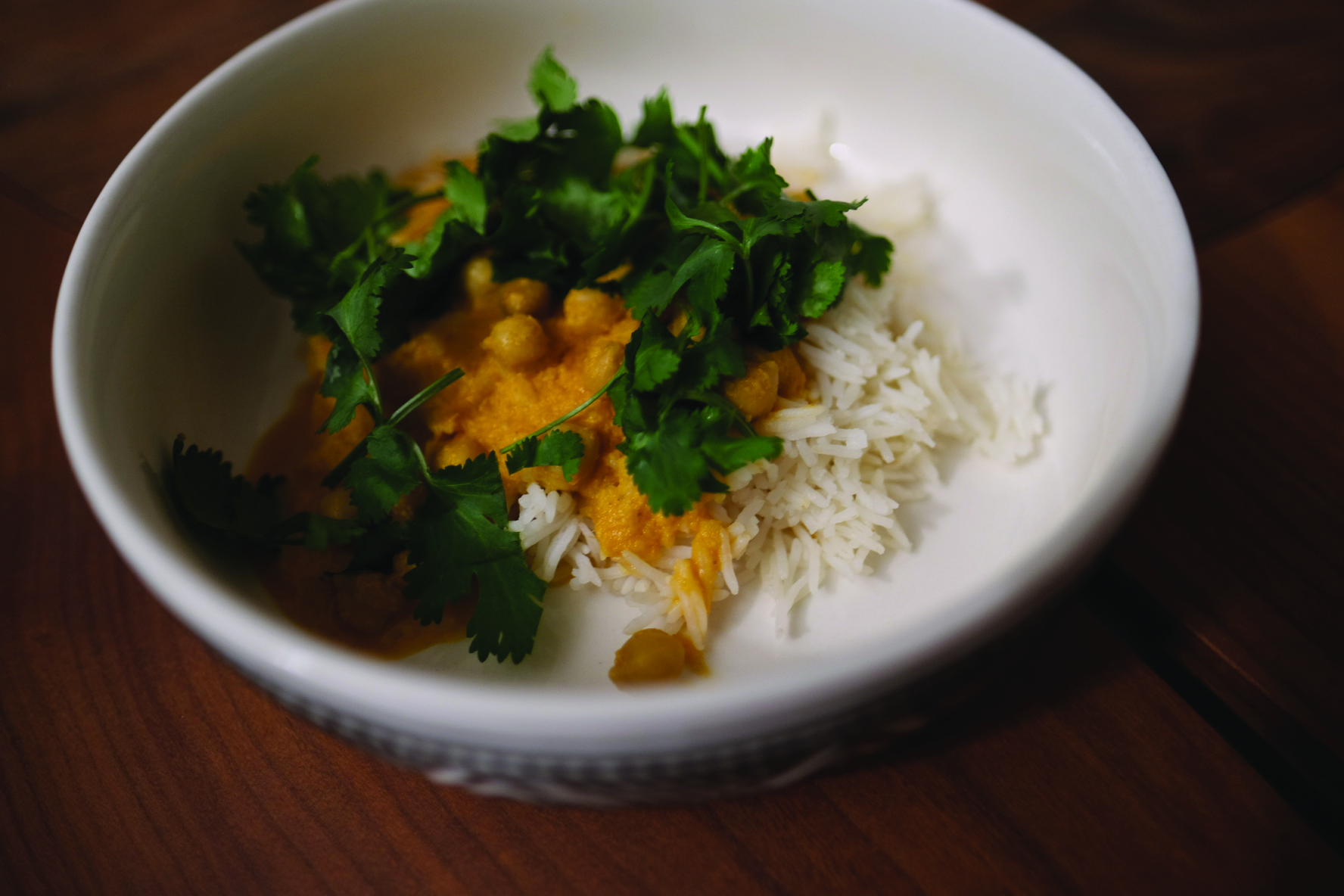Five Harmonious Foods To Balance Body, Mind + Spirit | By Morgan Kulas
Moment to moment, we are adapting spontaneously to our environment — navigating work, relationships and an ever-evolving socio-economic landscape. Without really knowing it, our bodies are in an abiding process of regeneration.
The definition of healing is to become whole again. Yoga and Ayurveda are healing sciences grounded in the mysterious reality that our bodies are in a persevering practice of balance. The Sanskrit word for this is sattva. Sattva means harmony, and it is the aim of our daily sadhana, or spiritual exercise.
There are three ways we take in prana, or life force energy: through breath, food and sensory input/output. Pratyahara is the first stage in Patanjali’s eight limbs of yogic meditation, and it means to nourish the senses. We can apply this same idea to the way we breathe and the food we eat. The intention is to nourish and restore a soft, peaceful balance to our system.
When I think about eating a sattvic diet, I liken it to eating a heart-based diet. What is possible when you eat food that makes you feel more connected to the earth and to your spirit? In Ayurveda we recognize that everyone is different, so eating a heart-based diet is going to be unique to you. In general, Ayurveda encourages fresh, seasonal and simple foods for ultimate vitality and wellbeing. Let’s look at five of them here.
Chickpeas
The chickpea (or garbanzo bean, Bengal gram or Egyptian pea) is a staple in the plant- based diet. A legume that many can tolerate, it is a key ingredient in chana masala and beloved hummus. Chickpeas are a good source of protein, dietary fiber and potassium. Cooking them has been proved to increase protein digestibility for many folks. Chickpeas are sweet, astringent and cooling therefore decreasing pitta (sometimes increasing vata and kapha).
Cardamon
Cardamom is a sweet and warming spice that is used medicinally and favorably in cooking. It assists in synchronizing sugar and water metabolism, promotes healthy circulation and minimizes nausea. Most people love the taste and smell of cardamom and therefore use it to comfort and calm the heart-mind by cooking with it or applying it topically as an essential oil. The sweet taste and smell of cardamom is balancing for all doshas. Cardamom can also be used to aid in the digestion of dairy products.
Cilantro
Cilantro is cooling, making it a great food for summer time. It is pitta pacifying and is used medicinally for skin allergies, hay fever, sore throat and hyperacidity. It cleanses the blood and bile and helps with urinary tract infections. Cilantro and coriander are the same plant. All parts of the plant are edible, but the fresh leaves and the dried seeds are the parts most traditionally used in cooking. Enjoy your favorite hot and spicy meals by topping them with cilantro to cool the digestive effect.
Fennel
Fennel is a flowering plant species in the carrot family. The bulb, foliage and seeds are used in many culinary traditions, but originally, it is from the Mediterranean region. It is sweet, pungent and warming. It is good for abdominal pain due to gas, indigestion and menstrual cramps. Dr. David Frawley, an American Hindu teacher, considers fennel to be “perhaps the most balanced and sattvic of all spices.”
Seaweed
Seaweed refers to several species of algae, and as we all know, it grows in the ocean. Edible seaweed is salty, astringent and cooling. It is rejuvenating for your plasma, which is what delivers nutrients to your tissues, muscles, organs and bones. In Ayurveda, seaweed is recognized medicinally for its ability to balance the thyroid. While seaweed in excess can aggravate vata types, it is generally a healthy food item to implement into your diet, especially if you don’t live close to a coast.
Coconut Curried Chickpea Recipe

Photo by Morgan Kulas
Ingredients:
1/4 cup neutral oil such as avocado or grapeseed
2 15 oz cans of chickpeas rinsed and drained
1 15 oz can of coconut milk
2 cups basmati rice
1 medium onion finely chopped
2 medium tomatoes finely chopped
4-5 cloves garlic crushed
1-inch piece ginger crushed
3/4 tsp cumin seeds
2 tsp coriander powder
1/2 tsp turmeric powder
1 tsp paprika powder
11/4 tsp salt or to taste
1/2 tsp garam masala or chaat masala powder
1 tsp freshly squeezed lemon juice
2-3 Tbsp cilantro leaves chopped
Directions:
- Cook basmati rice in your rice cooker and set aside.
- Add oil, cumin seeds and chopped onion to a medium-sized saucepan, and heat on medium-high. Sauté for about one minute.
- Add crushed garlic and ginger, chopped tomatoes, chickpeas and all remaining spices, and stir for another minute or two.
- Add coconut milk to the mixture and bring to a boil, then lower to a simmer for 10 to 20 minutes until chickpeas are tender to your preference.
- Stir in lemon juice and season to taste.
- Serve over rice and top with chopped cilantro leaves.
Originally published in the Summer + Fall 2021 issue

The FreeSip from Owala keeps your water cold for up to 24 hours, allows you to drink two [...]

Subscribe to Our Tribe
Stay up to date with Y+L News, Events and special announcements.









